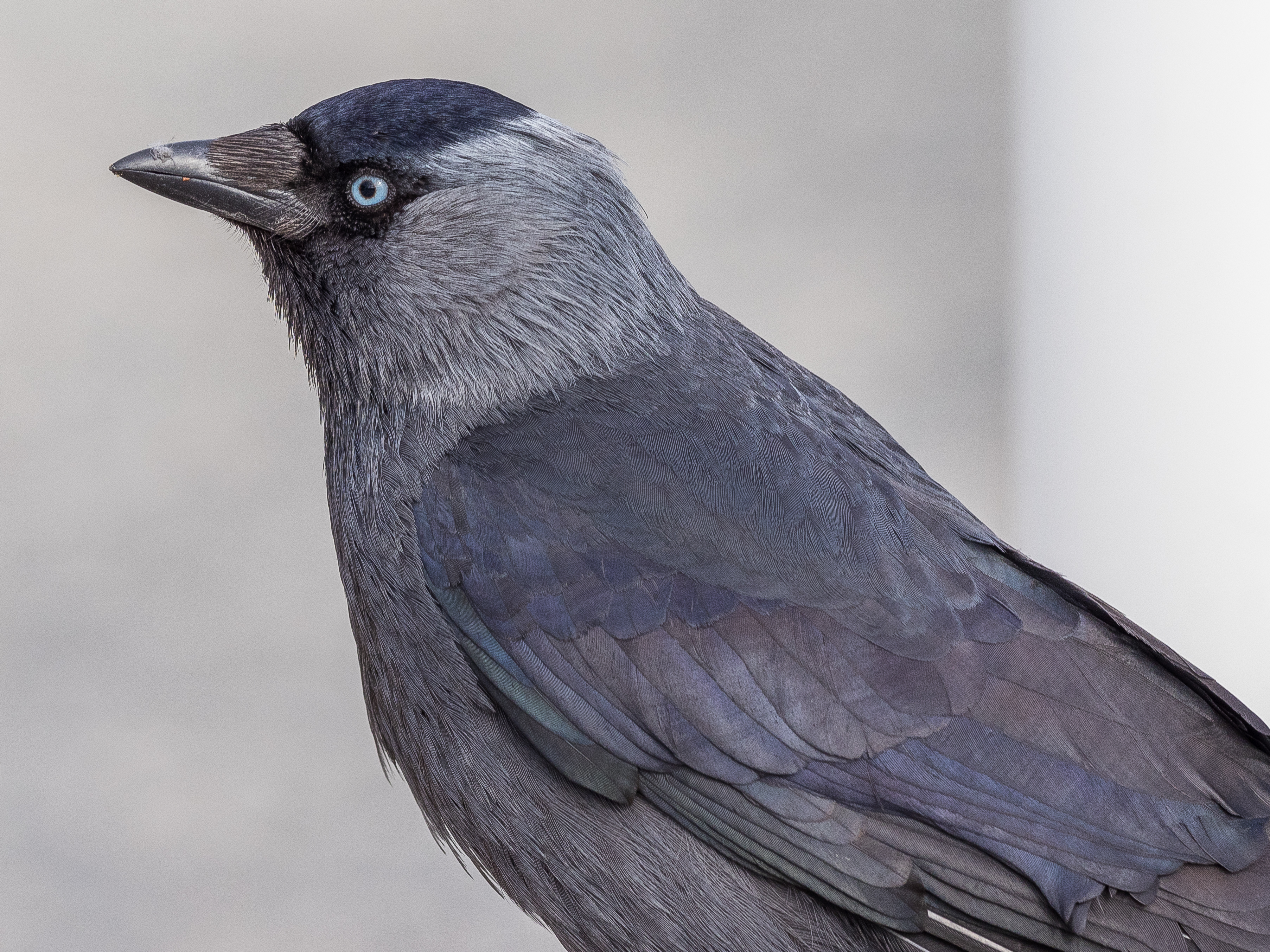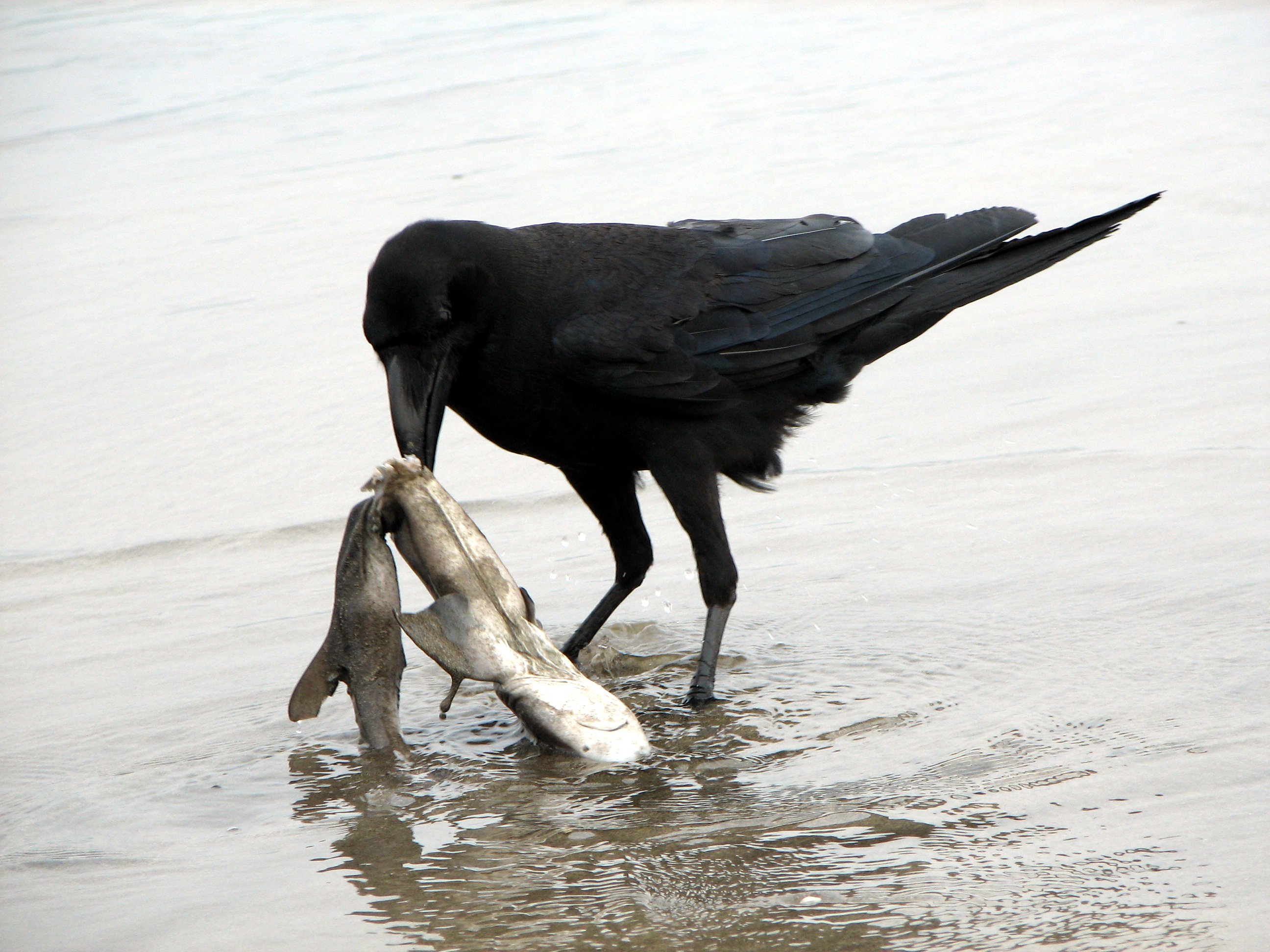|
Jackdaw
Jackdaws are two species of bird in the genus ''Coloeus'' closely related to, but generally smaller than, the crows and ravens (''Corvus''). ''Coloeus'' is sometimes treated as a subgenus of ''Corvus'', including by the IUCN.Madge & Burn (1994) vii. They have a blackish crown, wings and tail, the rest of the plumage being paler.Madge & Burn (1994) 136–138. The word ''Coloeus'' is New Latin, from the Ancient Greek for jackdaws: ' (). Taxonomy While some authors consider ''Coloeus'' a subgenus of ''Corvus'', others have classified ''Coloeus'' as a distinct genus in the family Corvidae. Following '' Birds of South Asia: The Ripley Guide'', the International Ornithological Congress has also reassigned the two jackdaw species from the genus ''Corvus'' to the genus ''Coloeus''. Species The species are the western jackdaw (''Coloeus monedula''), which breeds in the British Isles and western Europe, Scandinavia, northern Asia and Northern Africa, and its eastern counterpart, the Dau ... [...More Info...] [...Related Items...] OR: [Wikipedia] [Google] [Baidu] |
Western Jackdaw
The western jackdaw (''Coloeus monedula''), also known as the Eurasian jackdaw, the European jackdaw, or simply the jackdaw, is a passerine bird in the crow family. Found across Europe, western Asia and North Africa; it is mostly resident, although northern and eastern populations migrate south in the winter. Four subspecies are recognised, which differ mainly in the colouration of the plumage on the head and nape. Linnaeus first described it formally, giving it the name ''Corvus monedula''. The common name derives from the word ''jack'', denoting "small", and daw, a less common synonym for "jackdaw", and the native English name for the bird. Measuring in length, the western jackdaw is a black-plumaged bird with a grey nape and distinctive pale-grey irises. It is gregarious and vocal, living in small groups with a complex social structure in farmland, open woodland, on coastal cliffs, and in urban settings. Like its relatives, jackdaws are intelligent birds, and have ... [...More Info...] [...Related Items...] OR: [Wikipedia] [Google] [Baidu] |
Western Jackdaw
The western jackdaw (''Coloeus monedula''), also known as the Eurasian jackdaw, the European jackdaw, or simply the jackdaw, is a passerine bird in the crow family. Found across Europe, western Asia and North Africa; it is mostly resident, although northern and eastern populations migrate south in the winter. Four subspecies are recognised, which differ mainly in the colouration of the plumage on the head and nape. Linnaeus first described it formally, giving it the name ''Corvus monedula''. The common name derives from the word ''jack'', denoting "small", and daw, a less common synonym for "jackdaw", and the native English name for the bird. Measuring in length, the western jackdaw is a black-plumaged bird with a grey nape and distinctive pale-grey irises. It is gregarious and vocal, living in small groups with a complex social structure in farmland, open woodland, on coastal cliffs, and in urban settings. Like its relatives, jackdaws are intelligent birds, and have ... [...More Info...] [...Related Items...] OR: [Wikipedia] [Google] [Baidu] |
Daurian Jackdaw
The Daurian jackdaw (''Coloeus dauuricus'') is a bird in the crow family, Corvidae, native to eastern Asia. It is closely related to the western jackdaw. The name derives from the Dauria region of eastern Russia. Description At about in length, the Daurian jackdaw is about the same size as or slightly smaller than the western jackdaw, with the same proportions and identical habits. The principal difference lies in the plumage; many but not all adults have large areas of creamy white on the lower parts extending up around the neck as a broad collar. The head, throat, wings, and tail are glossy black and the ear coverts are grizzled grey. Darker adults and young birds resemble western jackdaws, though Daurian jackdaws have black irises, unlike the distinctive grey-white irises of the Eurasian jackdaw. The only other pied corvid species inhabiting the same region is the Chinese collared crow (''Corvus torquatus''), but as this is a much larger bird (about the same size or slightly l ... [...More Info...] [...Related Items...] OR: [Wikipedia] [Google] [Baidu] |
Coloeus
Jackdaws are two species of bird in the genus ''Coloeus'' closely related to, but generally smaller than, the crows and ravens (''Corvus''). ''Coloeus'' is sometimes treated as a subgenus of ''Corvus'', including by the IUCN.Madge & Burn (1994) vii. They have a blackish crown, wings and tail, the rest of the plumage being paler.Madge & Burn (1994) 136–138. The word ''Coloeus'' is New Latin, from the Ancient Greek for jackdaws: ' (). Taxonomy While some authors consider ''Coloeus'' a subgenus of ''Corvus'', others have classified ''Coloeus'' as a distinct genus in the family Corvidae. Following '' Birds of South Asia: The Ripley Guide'', the International Ornithological Congress has also reassigned the two jackdaw species from the genus ''Corvus'' to the genus ''Coloeus''. Species The species are the western jackdaw (''Coloeus monedula''), which breeds in the British Isles and western Europe, Scandinavia, northern Asia and Northern Africa, and its eastern counterpart, the Daur ... [...More Info...] [...Related Items...] OR: [Wikipedia] [Google] [Baidu] |
Corvus
''Corvus'' is a widely distributed genus of medium-sized to large birds in the family Corvidae. It includes species commonly known as crows, ravens and rooks. The species commonly encountered in Europe are the carrion crow, the hooded crow, the common raven and the rook; those discovered later were named "crow" or "raven" chiefly on the basis of their size, crows generally being smaller. The genus name is Latin for "crow". The 45 or so members of this genus occur on all temperate continents except South America, and several islands. The ''Corvus'' genus makes up a third of the species in the family Corvidae. The members appear to have evolved in Asia from the corvid stock, which had evolved in Australia. The collective name for a group of crows is a "flock" or a "murder". Recent research has found some crow species capable of not only tool use, but also tool construction. Crows are now considered to be among the world's most intelligent animals with an encephalization ... [...More Info...] [...Related Items...] OR: [Wikipedia] [Google] [Baidu] |
Corvus (genus)
''Corvus'' is a widely distributed genus of medium-sized to large birds in the family Corvidae. It includes species commonly known as crows, ravens and rooks. The species commonly encountered in Europe are the carrion crow, the hooded crow, the common raven and the rook; those discovered later were named "crow" or "raven" chiefly on the basis of their size, crows generally being smaller. The genus name is Latin for "crow". The 45 or so members of this genus occur on all temperate continents except South America, and several islands. The ''Corvus'' genus makes up a third of the species in the family Corvidae. The members appear to have evolved in Asia from the corvid stock, which had evolved in Australia. The collective name for a group of crows is a "flock" or a "murder". Recent research has found some crow species capable of not only tool use, but also tool construction. Crows are now considered to be among the world's most intelligent animals with an encephalization quoti ... [...More Info...] [...Related Items...] OR: [Wikipedia] [Google] [Baidu] |
IUCN
The International Union for Conservation of Nature (IUCN; officially International Union for Conservation of Nature and Natural Resources) is an international organization working in the field of nature conservation and sustainable use of natural resources. It is involved in data gathering and analysis, research, field projects, advocacy, and education. IUCN's mission is to "influence, encourage and assist societies throughout the world to conserve nature and to ensure that any use of natural resources is equitable and ecologically sustainable". Over the past decades, IUCN has widened its focus beyond conservation ecology and now incorporates issues related to sustainable development in its projects. IUCN does not itself aim to mobilize the public in support of nature conservation. It tries to influence the actions of governments, business and other stakeholders by providing information and advice and through building partnerships. The organization is best known to the wider p ... [...More Info...] [...Related Items...] OR: [Wikipedia] [Google] [Baidu] |
New Latin
New Latin (also called Neo-Latin or Modern Latin) is the revival of Literary Latin used in original, scholarly, and scientific works since about 1500. Modern scholarly and technical nomenclature, such as in zoological and botanical taxonomy and international scientific vocabulary, draws extensively from New Latin vocabulary, often in the form of classical or neoclassical compounds. New Latin includes extensive new word formation. As a language for full expression in prose or poetry, however, it is often distinguished from its successor, Contemporary Latin. Extent Classicists use the term "Neo-Latin" to describe the Latin that developed in Renaissance Italy as a result of renewed interest in classical civilization in the 14th and 15th centuries. Neo-Latin also describes the use of the Latin language for any purpose, scientific or literary, during and after the Renaissance. The beginning of the period cannot be precisely identified; however, the spread of secular educatio ... [...More Info...] [...Related Items...] OR: [Wikipedia] [Google] [Baidu] |
Ancient Greek
Ancient Greek includes the forms of the Greek language used in ancient Greece and the ancient world from around 1500 BC to 300 BC. It is often roughly divided into the following periods: Mycenaean Greek (), Dark Ages (), the Archaic period (), and the Classical period (). Ancient Greek was the language of Homer and of fifth-century Athenian historians, playwrights, and philosophers. It has contributed many words to English vocabulary and has been a standard subject of study in educational institutions of the Western world since the Renaissance. This article primarily contains information about the Epic and Classical periods of the language. From the Hellenistic period (), Ancient Greek was followed by Koine Greek, which is regarded as a separate historical stage, although its earliest form closely resembles Attic Greek and its latest form approaches Medieval Greek. There were several regional dialects of Ancient Greek, of which Attic Greek developed into Koi ... [...More Info...] [...Related Items...] OR: [Wikipedia] [Google] [Baidu] |
Molecular Phylogenetics And Evolution
''Molecular Phylogenetics and Evolution'' is a peer-reviewed scientific journal of evolutionary biology and phylogenetics. The journal is edited by E.A. Zimmer. Indexing The journal is indexed in: * EMBiology *Journal Citation Reports *Scopus Scopus is Elsevier's abstract and citation database launched in 2004. Scopus covers nearly 36,377 titles (22,794 active titles and 13,583 inactive titles) from approximately 11,678 publishers, of which 34,346 are peer-reviewed journals in top- ... * Web of Science External links * Elsevier academic journals Evolutionary biology journals Phylogenetics Molecular biology Publications established in 1992 Monthly journals {{biology-journal-stub ... [...More Info...] [...Related Items...] OR: [Wikipedia] [Google] [Baidu] |
International Ornithological Congress
International is an adjective (also used as a noun) meaning "between nations". International may also refer to: Music Albums * ''International'' (Kevin Michael album), 2011 * ''International'' (New Order album), 2002 * ''International'' (The Three Degrees album), 1975 *''International'', 2018 album by L'Algérino Songs * The Internationale, the left-wing anthem * "International" (Chase & Status song), 2014 * "International", by Adventures in Stereo from ''Monomania'', 2000 * "International", by Brass Construction from ''Renegades'', 1984 * "International", by Thomas Leer from ''The Scale of Ten'', 1985 * "International", by Kevin Michael from ''International'' (Kevin Michael album), 2011 * "International", by McGuinness Flint from ''McGuinness Flint'', 1970 * "International", by Orchestral Manoeuvres in the Dark from '' Dazzle Ships'', 1983 * "International (Serious)", by Estelle from '' All of Me'', 2012 Politics * Political international, any transnational organization of ... [...More Info...] [...Related Items...] OR: [Wikipedia] [Google] [Baidu] |






